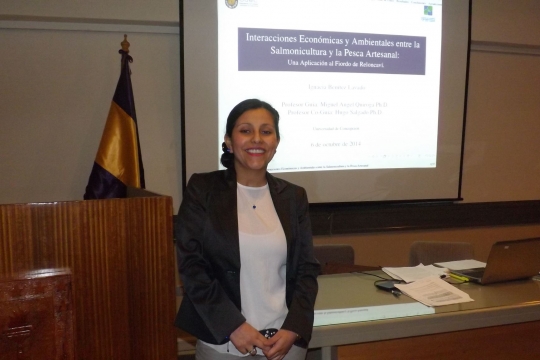A bio-socio-economic model was developed to analyze the economic and environmental interactions between the aquaculture activity and artisanal fisheries related to the seed settlement of Mytilus Chilensis that is realized in the Reloncaví Fjord. Meaning by economic interactions the effects of the action of both productivities activities has on the employment and production variables of this sectors. And for environmental interactions the effect that has the aquaculture activity on the seed settlement activity, in terms of the uneaten food pellets (nutrients). The bioeconomic model consists in 3 sub-models; The forest model characterized the salmoniculture production, the second model characterized the seed settlement activity in the fjord, incorporating an environmental parameter. This parameter enters the characterization of this sector, as an unwanted input. This input is a consequence of the aquaculture activity in surrounding areas to the seed settlement, as uneaten food pellets. The third sub-model simulates the dynamic of labor force of both productive activities as a result of a variation in the exogenous variable of capital in the aquaculture activity in the Fjord. Aquaculture and settlement of mussels production in the Fjord were described by a standard Cobb-Douglas production function. The results of the model show a positive relationship between seed settlement and the uneaten food pellets derivative from the aquaculture activity in fjord.
The simulations results investigating the effect of an increase in the capital of the aquaculture activity on the aquaculture production, seed settlement production and the aggregate labor force that comprise aquaculture and seed settlement labor, suggested a positive increases in this variables in different magnitudes.
The importance of having statistics in the productive sector of seeds settlement of mussels in the country is emphasized, to study the sustainable development of this sector. The research presented evidence that there are significant economic and environmental interactions between these sectors, therefore, it is necessary to advance into the integrated analysis of these, to promote the sustainable development of the communities in the Reloncaví Fjord.
